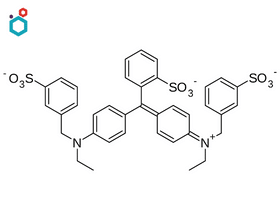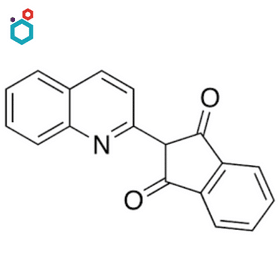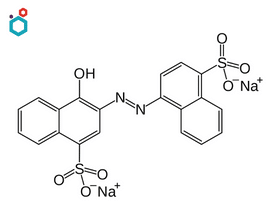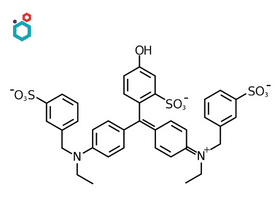Table of Contents
What are Food Dyes?
A color additive is any dye, pigment, or other material capable of imparting color to a food, medication, or cosmetic. Food Dyes, also referred to as Food Colorants are color additives used to impart color to foods and drinks, i.e., edible items. They are available in a wide variety of forms, including liquids, powders, gels, and pastes. They are used in commercial food production as well as in home cooking for a variety of purposes, some of which include enhancing the appearance of food by giving it an artificial color, making it more attractive, palatable, appealing, and appetizing, or to assist in the process of easy identification.
Food dyes include natural colors, which are obtained mostly from vegetable sources and are frequently referred to as vegetable dyes; inorganic pigments; mixtures of organic and metallic compounds (called lakes); and synthetic coal-tar chemicals. The first synthetic food colorings were made from coal tar in 1856. Currently, food colors are generally produced from petroleum.
History
Foods, medicines, and cosmetics were often colored with natural colorants derived from plants and minerals. It is believed that candy manufacturers in Egyptian cities added natural extracts and wine to their products in order to improve the product’s appearance as early as 1500 BC. This is when the practice of adding colorants to foods first began. By 1900, many foods, drugs, and cosmetics available in the U.S. were artificially colored.
In 1906, legislation was introduced in the United States with the purpose of regulating the origin and quality of the dyes that are utilized in the coloring of food. The Federal Food, Drug, and Cosmetic Act was enacted in 1938, and as part of its provisions, it assigned numbers to various food coloring additives and mandated that each batch of dyes need to be certified.
Objectives of using Food Dyes (Applications)
- Improve the natural hues that already exist.
- Counteract color loss caused by light, air, temperature extremes, humidity, and storage conditions.
- Make food aesthetically more pleasing, delicious, and informative.
- Accommodate for color variance occurring naturally.
- Provide color to bland food items and make them more appealing.
- Let consumers identify products visually, such as confectionery flavors.
- For decorative purposes.
Types of Food Dyes
Food Dyes can be broadly classified into the following two major categories, based on their origin, i.e., whether they are extracted from natural sources or are synthesized artificially through chemical means.
Natural Food Dyes
There are four primary groups of plant pigments that are grown specifically for the purpose of coloring food products. These groups are carotenoids (E160, E161, E164), chlorophyllin (E140, E141), anthocyanins (E163), and betanin (E162). The following are examples of additional colorants or specific derivatives of these fundamental groups:
- Annatto (E160b), a reddish-orange dye made from the seed of the achiote
- Caramel coloring (E150a-d), made from caramelized sugar
- Carmine (E120), a red dye derived from the cochineal insect, Dactylopius coccus
- Elderberry juice (E163)
- Lycopene (E160d)
- Paprika (E160c)
- Turmeric/curcumin (E100)
Artificial/Synthetic Food Dyes
Erythrosine

Erythrosine or Erythrosine B, is a fluorone derivative. It is a pink dye which is an approved food colorant in the US, EU and India and is primarily used for food coloring in sweets such as candies and popsicles, and even more widely used in cake-decorating gels. It is listed under the following number systems-
- FD&C Red No. 3
- E number E127 (Food Red 14)
- Color Index no. 45430 (Acid Red 51)
- Bureau of Indian Standards No. 1697
Tartrazine

Tartrazine is an organic trisodium salt of tartrazine acid. It is a type of azo dye that is anionic and hydrophilic. Yellow 5 Lake and Food Yellow 4 are some of the other names for this color. It is a frequently used food colorant that is approved for use in food in the United States and India. It is listed under the following number systems-
- FD&C Yellow 5
- E number E102 (Food Yellow 4)
- Color Index no. 19140 (Acid Yellow 23)
- Bureau of Indian Standards No. 1694
Tartrazine has been reported to trigger allergic reactions in people who suffer from asthma and in those who have an intolerance to aspirin and is thus banned in countries like Sweden, Switzerland, Norway and Austria.
Sunset Yellow FCF

Sunset yellow FCF, also known as FD&C Yellow No. 6 in the United States, is permitted for use in coloring foods, pharmaceuticals, and cosmetics with an acceptable daily consumption of 3.75 mg/kg. It is an azo dye generated from petroleum. It is used to impart an orange shade to foods and nutritional supplements. It is listed under the following number systems-
- FD&C Yellow 6
- E number E110
- Color Index no. 15985 (Orange Yellow S)
- Bureau of Indian Standards No. 1695
Brilliant Blue FCF

The brilliant blue FCF dye, often known as Blue 1, is a triarylmethane dye. It is an approved food colorant in the USA and EU. It is one of the earliest FDA-approved color additives, and its principal use is as a blue coloring agent in processed foods, pharmaceuticals, dietary supplements, and cosmetics. It is generally regarded as safe and non-toxic. It is listed under the following number systems-
- FD&C Blue No.1
- E number E133 (Food Blue 1)
- Color Index no. 42090 (Acid Blue 9)
- Bureau of Indian Standards No. 6406
Indigo Carmine

Indigo Carmine, also known as Indigotindisulfonate Sodium, is a type of organic chemical that is produced by subjecting indigo to aromatic sulfonation. It is approved as a dye to be used in food coloring in the U.S and E.U. to produce a blue color and is listed under the following number systems-
- FD&C Blue No.2
- E number E132
- Color Index no. 73015 (Acid Blue 74)
- Bureau of Indian Standards No. 1698
It is also used as an indicator and finds its application in clinical endoscopy.
Resource on Indigo Carmine: Indigo Carmine | Structure, Properties, Uses & Side effects
Quinoline Yellow

Quinoline Yellow belongs to the class of quinophthalone dyes. It exists in two forms, Quinoline Yellow SS (spirit-soluble) and Quinoline Yellow WS (water-soluble). Quinoline Yellow is approved for use in beverages throughout the European Union and Australia, and it is also used in meals such as sauces, decorations, and coatings. It is listed under the following number systems-
- FD&C Yellow 10
- E number E104 (Food Yellow 13)
- Color Index no. 47005
A study commissioned by the UK’s Food Standards Agency found that when Quinoline Yellow used in a mixture of other preservatives (as in case of beverages), increased levels of hyperactivity in children, ADHD-like behaviour, were observed. Thus, its use was banned by the European regulatory community but was permitted again in 2009.
Patent Blue V

Patent Blue V or Acid Blue 3 is a synthetic triphenylmethane dye. It is also called Food Blue 5, Sulphan Blue, Acid Blue 3, L-Blau 3, C-Blau 20, Patentblau V, or Sky Blue C.I. 42051. It is used as a food additive in certain jelly sweets and gelatin desserts in Europe. It is listed under the following number systems-
- E number E131 (Food Blue 5)
- Color Index no. 42051
However, it is prohibited as a food coloring in Australia and the United States due to health officials’ suspicions that it may cause allergic responses and, in rare cases, anaphylactic shock; hence, it is not advised for children in these countries.
Allura Red AC

Allura Red AC is a well-known dye that is used all over the world. It was initially introduced as a substitute for Amaranth but is now a FDA-approved dye for usage in cosmetics, medicines, and food and is by far the most commonly used red dye in the United States. It is listed under the following number systems-
- FD&C Red No.40
- E number E129 (Food Red 17)
- Color Index no. 16035
It is used in a variety of items, including tattoo ink, cotton candy, soft beverages, cherry-flavoured products, children’s pharmaceuticals, and dairy products.
Carmoisine (Red 10)

Carmoisine, also commonly referred to as Azorubine, is a red-colored azo dye. It is mostly used in fermented foods that have undergone thermal processing. It is also used in certain other foods and beverages, such as cheeses, dried fruit, and some alcoholic beverages. It has the Color Index No. 14720.
It is approved as a food dye in the European Union, having E number E122 and in India. However, it is not on the lists of approved food colors in the U.S. and in Canada.
Ponceau 4R (Red 18)

Ponceau 4R is an azo dye, which is strawberry red in color and has a number of applications in the food industry. It is also known by a number of other names like, Cochineal red A, Brilliant scarlet 3R, Brilliant scarlet 4R, New coccine, Acid Red 18, and Food Red 7. Typical applications include use in beverages, confectionery and bakery products, snacks, dry mixes and seasonings, and in other items.
It is used in Europe (E Number E124), Asia, and Australia, but has not been approved for human consumption by the US-FDA.
Fast Green FCF (Green 3)

Fast Green FCF, also known as Food Green 3 and Green 1724, belongs to the category of triarylmethane dyes. As a food coloring additive, it is utilized in dietary supplements, morning cereals, baked goods such as cakes and cupcakes, drink mixtures, and frozen delights.
It is an approved food dye in the European Union (E Number E143), US (FD&C Green No. 3), and India. However, it is the least utilized of the seven FDA-approved dyes in the United States.
Green S

Green S is a bright green artificial food dye from the triarylmethane dye family. It is also known as Food green S, Acid green 50, Lissamine green B, and Wool green S. It is used in a range of products, including mint sauce, desserts, sweets, ice creams, and processed Canned Peas.
It is approved for use as a food additive in the EU (E Number E142), Australia, India and New Zealand.
Regulations governing use of Food Dyes
Different international organizations test the safety of food dyes according to their respective parameters, and sometimes these organizations hold divergent opinions regarding the safety of food colors. In the United States, FD&C numbers (which indicate that the FDA has approved the colorant for use in foods, drugs and cosmetics) are allocated to approved synthetic food dyes that do not exist in nature, while in the European Union, E numbers are used for all additives, both synthetic and natural, that are approved in food applications. In the EU, the European Food Safety Authority evaluates the safety of food dyes and other food additives.
The majority of other nations have their own standards and lists of food dyes that can be used in a variety of applications, as well as their maximum acceptable daily intake limitations. Natural colors are not required to be tested by the FDA in the United States and many other countries.
Synthetic dyes currently approved for use in food-
In US
As of the year 2016, the following seven synthetic dyes can legally be used as colorants in food in the United States :-
- FD&C Blue No. 1 – Brilliant blue FCF, E133 (blue shade)
- FD&C Blue No. 2 – Indigotine, E132 (indigo shade)
- FD&C Green No. 3 – Fast green FCF, E143 (turquoise shade)
- FD&C Red No. 3 – Erythrosine, E127 (pink shade)
- FD&C Red No. 40 – Allura red AC, E129 (red shade)
- FD&C Yellow No. 5 – Tartrazine, E102 (yellow shade)
- FD&C Yellow No. 6 – Sunset yellow FCF, E110 (orange shade)
In India
In accordance with the Food Safety and Quality Act of 2006, the following eight synthetic coloring agents are allowed to be used in food products in India :-
| Sr. No. | Dye | Other Name | Color | INS No. | Chemical Class |
|---|---|---|---|---|---|
| 1. | Ponceau 4R | Red 18 | Red | 124 | Azo |
| 2. | Carmoisine | Red 10 | Red | 122 | Azo |
| 3. | Erythrosine | Red 3 | Red | 127 | Xanthene |
| 4. | Tartrazine | Yellow 5 | Yellow | 102 | Pyrazolone |
| 5. | Sunset Yellow FCF | Yellow 6 | Yellow | 110 | Azo |
| 6. | Indigo Carmine | Blue 2 | Blue | 132 | Indigoid |
| 7. | Brilliant Blue FCF | Blue 1 | Blue | 133 | Triarylmethane |
| 8. | Fast Green FCF | Green 3 | Green | 143 | Triarylmethane |
In EU
The European Union maintains a list of additives that are currently permitted for use. The range of synthetic food dyes is represented by the E numbers 102-143. Some artificial dyes approved for food use in the EU include :-
- E104: Quinoline yellow
- E122: Carmoisine
- E124: Ponceau 4R
- E131: Patent blue V
- E142: Green S
Disclaimer-
The information provided here is based on general knowledge, articles, research publications etc. and we do not claim the authenticity of any of the information provided above. We do not claim or suggest/advise any medical, therapeutic, health or nutritional benefits of our Food Dyes. We do not supply or promote our Food Dyes for the applications which are covered by valid patents and which are not approved by the FDA.

